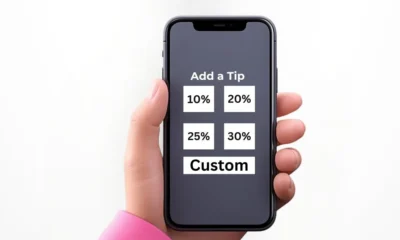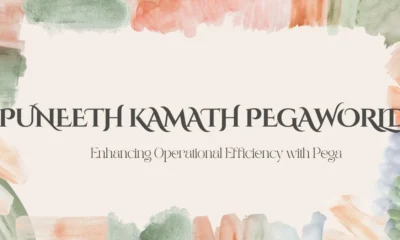GENERAL
Tractor Supply Sales Associate Job Description Guide

The sales associate is one of the most important positions in the retail industry, particularly in an organization that prides itself on meeting the needs of the customer, such as Tractor Supply. As a retailer of specialty products that support rural lifestyles, Tractor Supply Company (TSC) aims to provide among the best frontline services to its patrons.
About Tractor Supply Company
Tractor Supply Company was established in 1938 and has become the largest American rural lifestyle retailer chain. It operates more than 2,000 stores in 49 states, and it caters to recreational farmers, ranchers, pet owners, and homeowners as well as outdoor enthusiasts. Its people-centric culture is the key to its business because it begins when we recruit skilled and passionate sales associates.
The tractor supply sales associate job description will aim towards showing the commitment of the company to service, community, and know-how in its rural living products.
Tractor Supply Sales Associate Job Description: An Overview
Essentially, the tractor supply sales associate job description spells out the obligations of workers who help customers, handle inventory, retail product displays, and follow store standards. It is an amalgamation of physical activity, product knowledge, and customer service in a fast-action retail operation.
The role of a Tractor Supply sales associate is to establish a supportive retailing environment, provide useful advice, and make the team effort a success.
TRENDING: Mannacote: Natural Coating for Safe Crop Protection
Primary Responsibilities
1. Delivering Outstanding Customer Service
Another key issue on the tractor supply sales associate job description is the ability to maintain a high degree of customer service. Associates are supposed to:
- Welcome all the customers and support them in locating products.
- Learn customer requirements and be able to advise.
- Solve problems and respond to queries regarding products.
- Establish relationships with repeat customers to foster loyalty.
2. Merchandising and Inventory Management
It is the role of the sales associates to maintain the shelves in stores in shape and well-stocked. Merchandising activities performed daily entail:
- Maintaining supplies and checking whether the items are properly labelled and priced.
- Installations of advertisement displays and seasonal setups.
- Monitoring the stock and reporting about shortages or stock where the quantity is in excess.
3. Point-of-Sale Transactions
Processing the checkout is one of the major parts of the tractor supply sales associate job description. Duties include:
- Working in cash registers and payments (cash, card, digital).
- Marketing loyalty programs and branded credit cards of Tractor Supply.
- Return and exchange management in a professional way.
4. Maintaining Store Cleanliness and Safety
Customers and staff should have a clean and safe environment. Associates are supposed to:
- Maintain clean store displays, washrooms, and entrance ways.
- When handling the products and hazardous materials, follow all procedures of safety procedures.
- Help during the opening and closing of the stores.
Key Skills and Qualifications
Tractor supply sales associate job description pays focus on the balance between hard and soft skills with significant emphasis on communication, proper reliability, and physical endurance.
Essential Skills:
- Fine communication and interpersonal skills.
- Elementary math and computer abilities.
- Group work and problem-solving attitude.
- Good attention to detail.
Preferred Qualifications:
- High school diploma / GED.
- Previous experience in retailing or customer service.
- interest or knowledge in rural products, livestock, or agriculture.
- For the ability to work with the use of forklifts or any other equipment (certification is sometimes necessary).
Physical Requirements and Work Conditions
The tractor supply sales associate job description includes physical and environmental expectations. This role requires:
- Standing and walking for extended periods (up to 8 hours).
- Lifting, pushing, or pulling merchandise weighing up to 50 lbs.
- Working indoors and outdoors, sometimes in varying weather conditions.
- Using ladders and equipment to move or stock products.
Applicants must be comfortable performing physically demanding tasks in a fast-paced setting.
Work Schedule and Flexibility
The tractor supply provides both part-time and full-time jobs; hence, this job can suit a student, a parent, or anyone who has prior commitments. The sales associates should be ready to work:
- Weekdays, evenings, weekends, and holidays.
- Overtime in high seasons (spring, fall, and holidays).
- Flexible working hours, such as opening and closing times.
Compensation and Benefits
Although you could be compensated differently depending on the geographical area, experience, and type of position you work, the standard benefits of a tractor supply sales associate job description are:
- Competitive Hourly Salaries
- Employee Discounts on the store merchandise.
- Health Benefits (medical, dental, vision) for full-time employees.
- Company matching 401(k) Retirement Plans.
- Paid holidays and Paid Time Off (PTO).
- Culture systematic training and progression development.
Tractor Supply acknowledges the significance of recognizing the hard efforts and provides a way of career enhancement throughout the company.
Career Advancement Opportunities
One of the key features of the tractor supply sales associate job description is the potential for internal promotion. Associates who show initiative, leadership, and a strong work ethic may move up to roles such as:
- Team Leader
- Assistant Store Manager
- Store Manager
- District Manager
In addition to in-store positions, high-performing employees may pursue corporate roles in merchandising, supply chain, customer service, or human resources.
Workplace Culture at Tractor Supply
The company’s core values of Tractor Supply are Integrity, Respect, Teamwork, and Accountability, and are reflected in all elements of work. The atmosphere is said to be friendly, encouraging, and neighbourly by the sales associates.
The firm also focuses on giving back, and it contributes to such causes as 4-H, FFA, and pet adoption events. The employees will be motivated to be involved in local outreaches, as well as community development interventions.
The tractor supply sales associate job description does not simply focus on the retail tasks, but it is associated with a team that has a conviction to make a difference.
How to Apply for a Sales Associate Position at Tractor Supply
The Tractor Supply has an easy and accessible means of applying for a job. This is how to go about it:
- See the Careers Page
- An Online Application
- A Pre-Employment Assessment should be completed.
- Go to an Interview
- Training and Criminal Background Check
Conclusion
The tractor supply sales associate job description is a position that combines all the roles of a customer service specialist, merchandiser, and retailer. This position should go to the person who is more comfortable in community-based jobs with a lot of interactivities and a strong desire to help in the maintenance of a rural way of life.
-

 BIOGRAPHY6 months ago
BIOGRAPHY6 months agoBehind the Scenes with Sandra Orlow: An Exclusive Interview
-

 HOME1 year ago
HOME1 year agoDiscovering Insights: A Deep Dive into the //vital-mag.net blog
-

 HOME1 year ago
HOME1 year agoSifangds in Action: Real-Life Applications and Success Stories
-

 BIOGRAPHY1 year ago
BIOGRAPHY1 year agoThe Woman Behind the Comedian: Meet Andrew Santino Wife




























